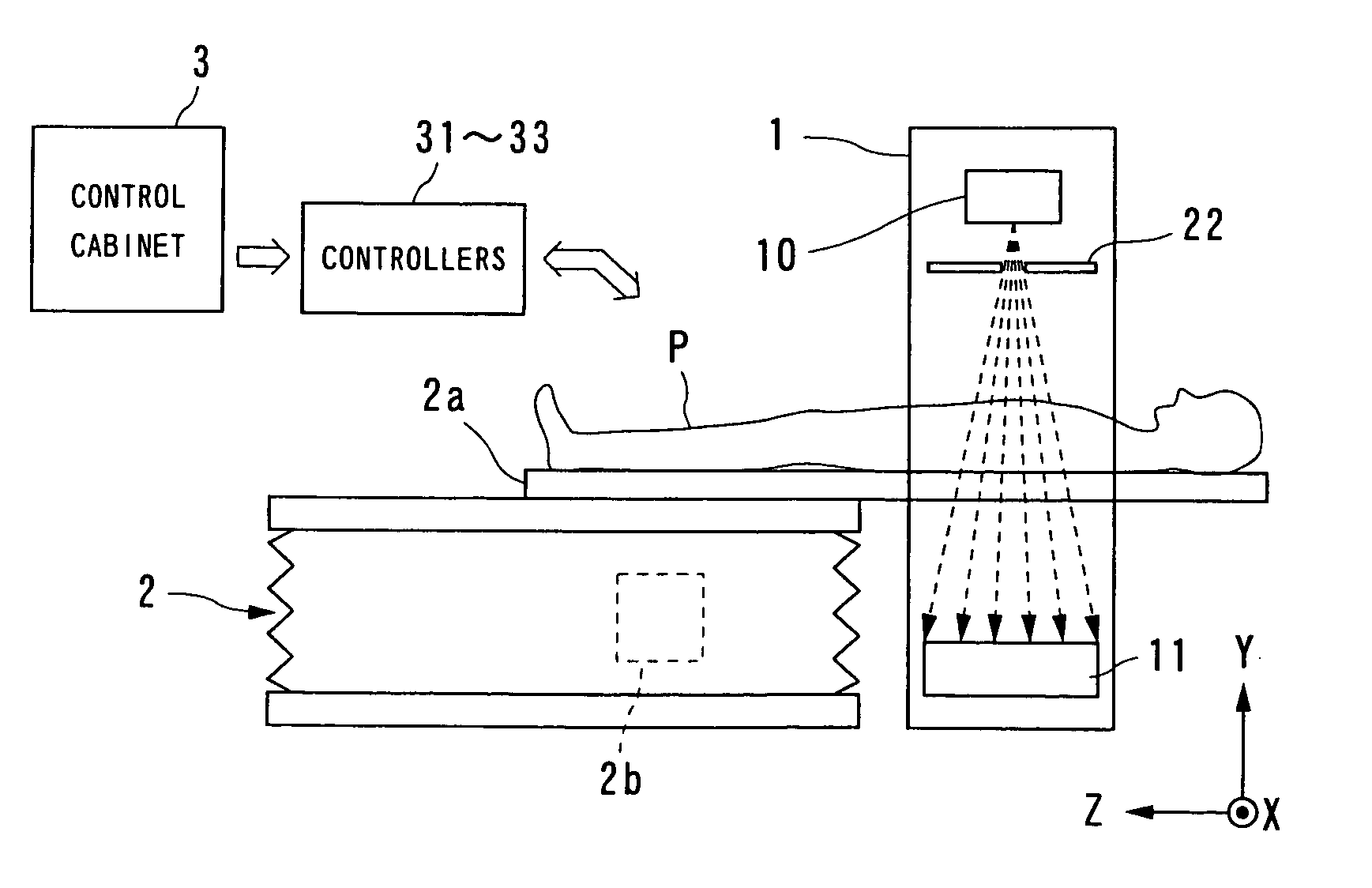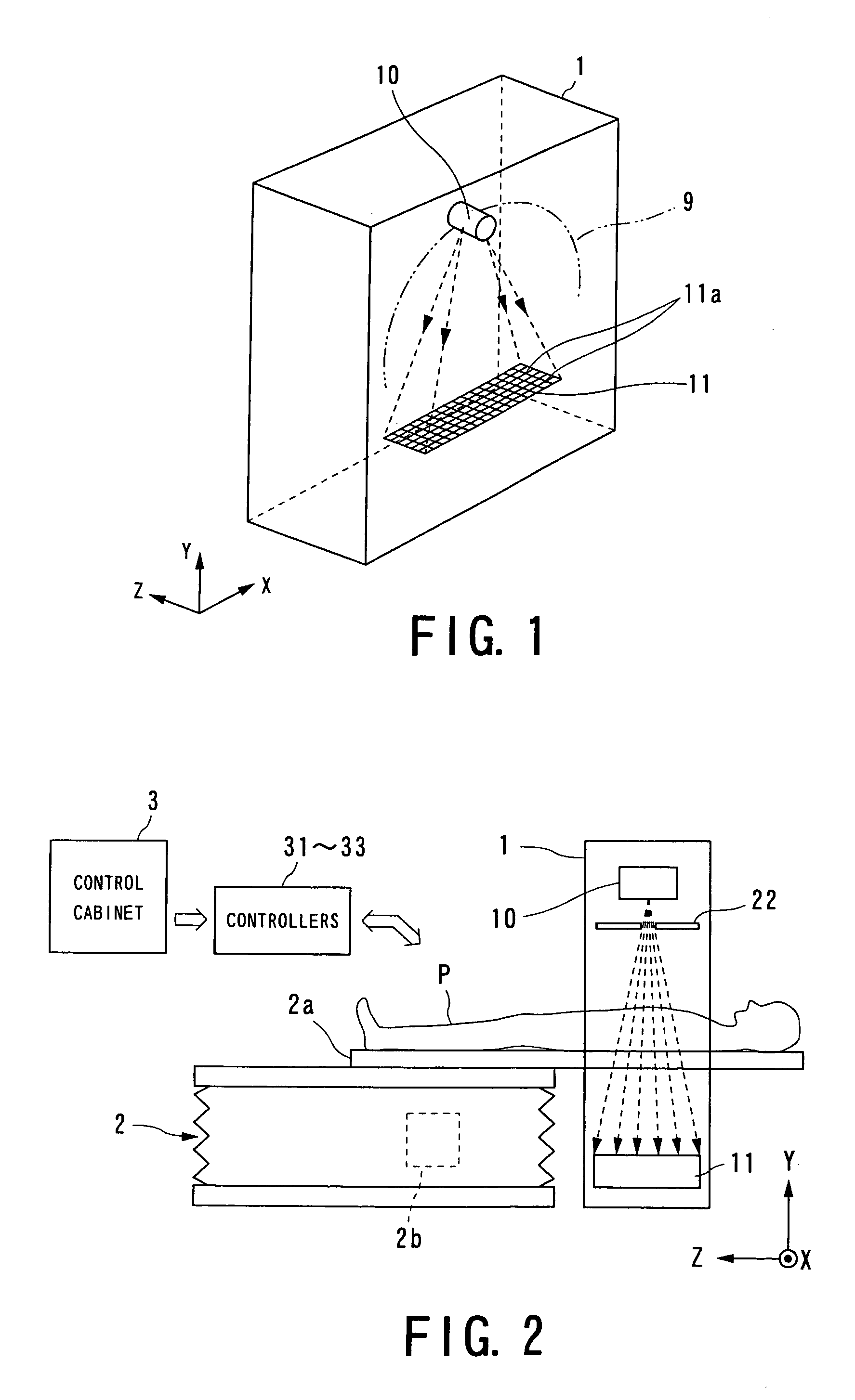Cone beam type of x-ray CT system for three-dimensional reconstruction
a ct system and x-ray technology, applied in tomography, instruments, nuclear engineering, etc., can solve the problems of deteriorating temporal resolution, artifacts on images, and problems with ct scanners
- Summary
- Abstract
- Description
- Claims
- Application Information
AI Technical Summary
Benefits of technology
Problems solved by technology
Method used
Image
Examples
Embodiment Construction
[0058] Referring to FIGS. 1 to 37, an X-ray CT system according to the present invention will now be described. A three-dimensional reconstruction algorithm for X-ray CT and a method of setting a correction function for the X-ray CT according to the present invention will now be described in the explanation of the X-ray CT system, because they are practiced together with the functions of the X-ray CT system.
[0059] An X-ray CT scanner (i.e., X-ray CT system) shown in FIGS. 1 to 3 is provided with a gantry 1, a couch 2, a control cabinet 3, a power supply 4, and various controllers and is driven, for example, in an R-R drive manner. The various types of controllers include a high-voltage controller 31, a gantry controller 33, and a couch controller 32.
[0060] As shown in FIGS. 1 and 2, the longitudinal direction of the couch 2 is designated as a low direction Z (or rotation-axis direction or slice direction) and the two directions orthogonal to this direction Z are defined as a channel...
PUM
 Login to View More
Login to View More Abstract
Description
Claims
Application Information
 Login to View More
Login to View More - R&D
- Intellectual Property
- Life Sciences
- Materials
- Tech Scout
- Unparalleled Data Quality
- Higher Quality Content
- 60% Fewer Hallucinations
Browse by: Latest US Patents, China's latest patents, Technical Efficacy Thesaurus, Application Domain, Technology Topic, Popular Technical Reports.
© 2025 PatSnap. All rights reserved.Legal|Privacy policy|Modern Slavery Act Transparency Statement|Sitemap|About US| Contact US: help@patsnap.com



